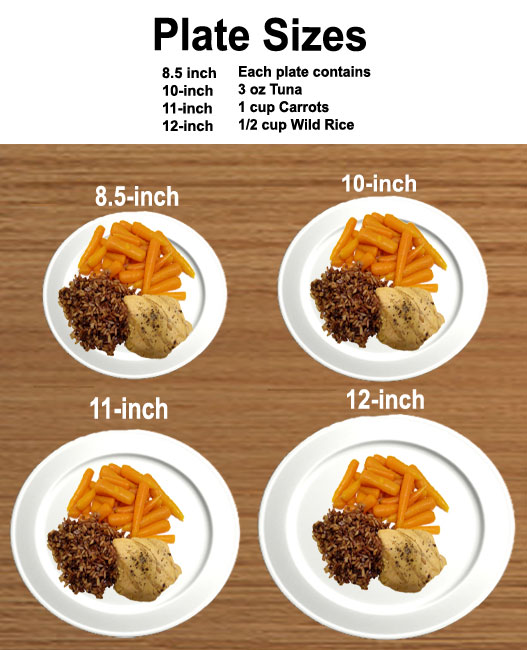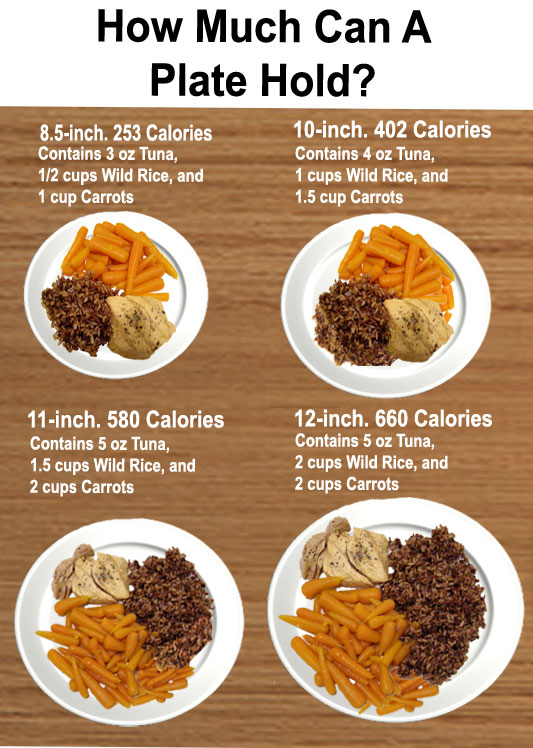I'm not sorry to see the food pyramid being replaced. The design presented challenges in counseling and education.
The USDA said in a statement this week that the new food icon would be "part of a comprehensive nutrition education initiative providing consumers with easy-to-understand recommendations, a new website with additional information, and other tools and resources."
The plate design will be a welcomed change. One of the advantages in using a food plate is the ability to visually demonstrate portion sizes.
The History of Plate Sizes
Graphic 1

Fast foods do not have a monopoly on super size. The plate industry has had its own growth spurt during the past 50 years. In the 1960's dinner plates were about 8.5 to 9-inches in diameter and held about 800 calories; by 2009 plate size had grown to 12-inches with the capacity to hold about 1900 calories. The calorie differences are illustrated in the graphic below. (Calorie amounts will vary depending on the foods you choose.)
Graphic 1

Our Eyes Can Deceive Us
Last night, I tried an experiment with my family. First each person was presented with dinner on an 8.5 inch plate. Then I removed the plates and set out the 12-inch plates. When asked which plate had more food, five out of six said the 8.5 inch plate.
The amount of food was identical, but when comparing the two sizes the participants looked to see how much food filled their plate.
Graphic 2
Graphic 2
This is a further illustration of the same amount of food on different plate sizes. The larger the plate, the smaller the food appeared.
Next, I wanted to see how much food the different size plates could hold. The calorie amounts differ from graphic 1 due to the foods I used, but there was a significant increase in calories as the size of the plate grew.
I am looking forward to the unveiling of the new icon.






















